Properly installing and utilizing an integrated drop bar can significantly improve your bike’s performance and comfort. Here’s a step-by-step guide to help you get the most out of this upgrade:
Choose Quality: Start with a premium product like the Trifox Integrated Carbon Drop Handlebar with Stem DHB500. This integrated design combines the handlebar and stem, offering better aerodynamics and stability.
Compatibility Check: Ensure the new drop bar is compatible with your bike's fork steerer tube diameter and stem length.
Remove Old Handlebars: Safely remove the existing handlebars by loosening the stem bolts and detaching brake levers, shifters, and accessories.
Install the Integrated Bar: Position the integrated drop bar on the steerer tube, ensuring it’s properly aligned with the front wheel. Tighten the stem bolts evenly to achieve secure fastening.
Attach Controls: Reinstall brake levers and shifters, adjusting their positions for easy reach and comfort. Securely fasten all components.
Cable Management: Neatly route and secure the cables using integrated channels or zip ties. This keeps the cockpit tidy and prevents interference during rides.
Handlebar Tape: Wrap the handlebars with tape to enhance grip and comfort. This also helps in absorbing road vibrations.
Test Ride: Take a test ride to ensure everything feels comfortable and secure. Make any necessary adjustments to the position of the controls or the angle of the handlebars.
By following these steps, you can successfully install and utilize an integrated drop bar like the Trifox Integrated Carbon Drop Handlebar with Stem DHB500. This upgrade not only enhances the aesthetics of your bike but also improves your riding efficiency and comfort.
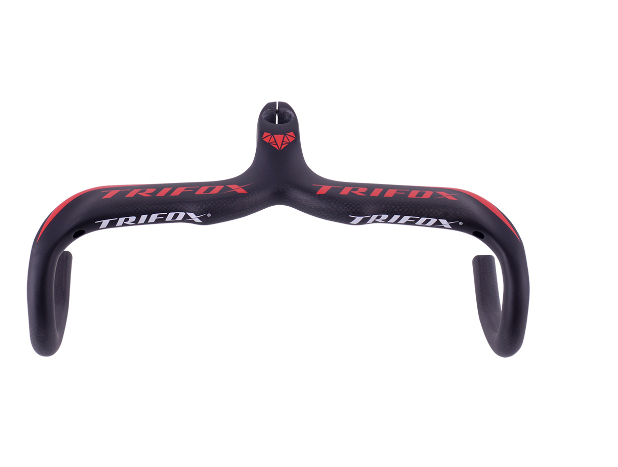
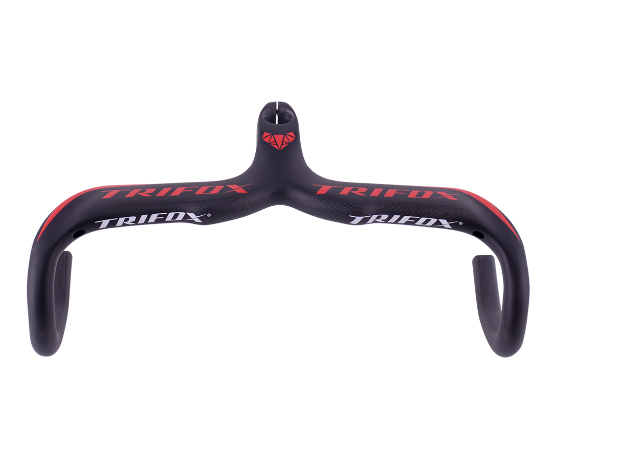
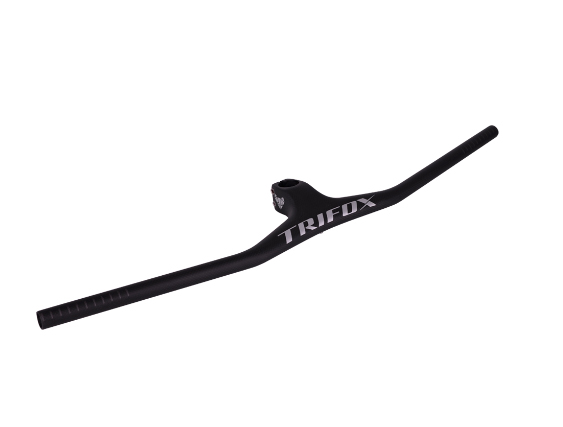
Upgrading your bike with a 3K weave handlebar is an excellent way to enhance performance, comfort, and aesthetics. Here’s how to make the most of this upgrade:
Choose Quality: Start with a high-quality option like the Trifox Carbon Integrated Handlebar RHB200. The 3K weave carbon fiber ensures superior strength and lightweight properties, reducing overall bike weight for better handling.
Compatibility: Ensure the new handlebar fits your bike’s stem and fork. Check the clamp diameter to match your current setup, commonly 31.8mm or 35mm.
Remove Old Handlebars: Safely remove the old handlebars by loosening the stem bolts. Carefully detach the brake levers, shifters, and any accessories.
Install the New Handlebar: Position the new 3K weave handlebar on the stem, ensuring it is centered and properly aligned with the front wheel. Tighten the stem bolts evenly to avoid any imbalance.
Attach Controls: Reinstall the brake levers and shifters, adjusting their positions for comfortable reach. Securely fasten all components.
Cable Management: Neatly reroute and secure the cables using zip ties or integrated channels if available. This ensures a clean look and prevents interference while riding.
Grip and Tape: Install new grips or wrap the handlebars with tape for added comfort and better grip. This also helps in absorbing vibrations during rides.
Test and Adjust: Take a test ride to ensure everything is securely in place and feels comfortable. Make any necessary adjustments to the positioning of controls or angle of the handlebars.
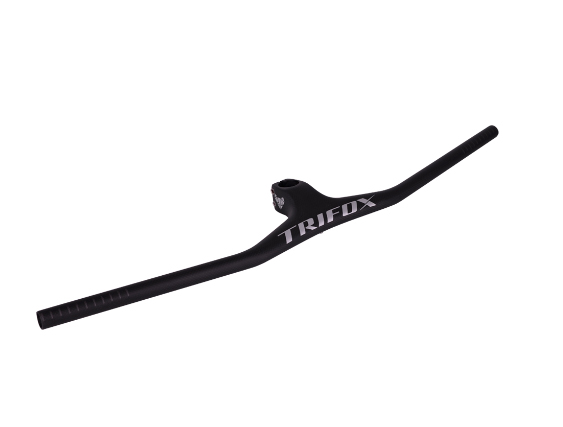
By following these steps, you can successfully upgrade your bike with a 3K weave handlebar like the Trifox Carbon Integrated Handlebar RHB200, enhancing both performance and aesthetics.
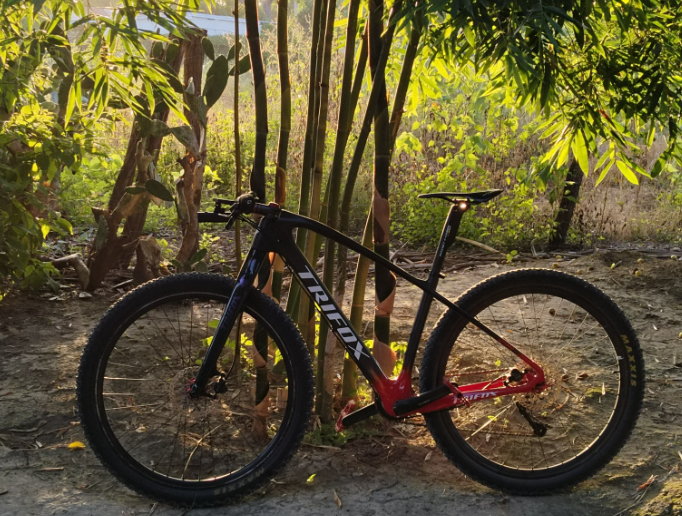
Optimizing your ride with a hardtail mountain bike can significantly enhance your trail experience, making it smoother and more efficient. Here’s how to get the most out of your ride:
Choose the Right Bike: Start with a high-quality bike like the Trifox M2 Hardtail Mountain Bike. Its lightweight carbon frame ensures durability and agility on various terrains.
Proper Fit: Ensuring your bike fits you well is crucial for comfort and performance. Adjust the saddle height so your legs have a slight bend at the bottom of the pedal stroke. The handlebars should allow you to maintain a slight bend in your elbows.
Tire Pressure: Optimize tire pressure based on the terrain. Lower pressure improves traction on rough trails, while higher pressure reduces rolling resistance on smooth paths. Always check the manufacturer’s recommended pressure range.
Suspension Setup: Fine-tune the front suspension to match your riding style and trail conditions. Proper suspension settings can absorb shocks better, providing a smoother ride.
Gear Selection: Use appropriate gearing to maintain a steady cadence. Lower gears help with uphill climbs, while higher gears are better for flat or downhill sections.
Maintain Your Bike: Regular maintenance is key. Clean the drivetrain, check the brake pads, and ensure all bolts are tightened. Lubricate the chain for smooth shifting.
Upgrade Components: Invest in quality components like lightweight wheels, reliable brakes, and comfortable grips to enhance your bike’s performance.
Riding Technique: Improve your riding skills. Keep your weight centered, look ahead to anticipate obstacles, and practice cornering techniques for better control.
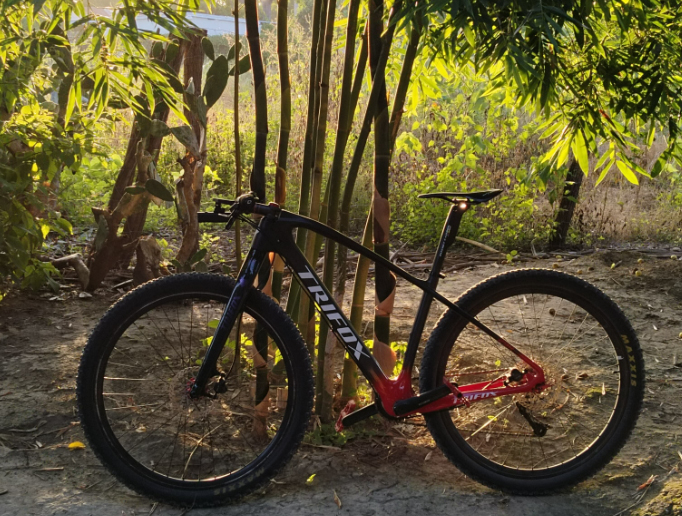
By following these tips and starting with a top-tier bike like the Trifox M2 Hardtail Mountain Bike, you can optimize your ride and enjoy superior performance on the trails.
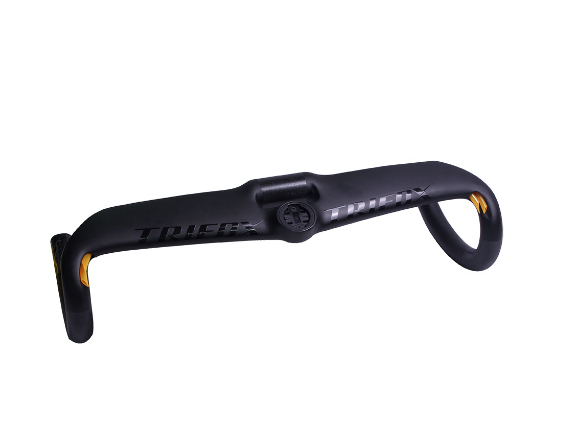
Selecting and installing the perfect bicycle drop bar can transform your riding experience, enhancing comfort, aerodynamics, and control. Here’s how to make the best choice:
Material: Opt for lightweight and durable materials like carbon fiber. The Trifox Aerofoil Section Carbon Drop Handlebar TC20AF is an excellent example, offering both strength and minimal weight.
Shape and Reach: Drop bars vary in shape (traditional, compact, ergo) and reach (distance from the bar to the brakes). Compact bars are great for smaller hands and provide easier access to controls. Ergo shapes offer enhanced comfort by fitting the natural curve of your hands.
Width: Match the width of the drop bar to your shoulder width for optimal control. Wider bars improve stability, while narrower bars reduce wind resistance, benefiting aerodynamic performance.
Drop: The drop (vertical distance between the top and bottom of the handlebars) affects your riding posture. A deeper drop suits more aggressive, aerodynamic positions, while a shallower drop is better for relaxed rides.
Installation: Installing drop bars can be straightforward. First, remove the old handlebars and clean the stem. Position the new bars and ensure alignment with the front wheel. Tighten the clamp bolts evenly. Attach the brake levers and shifters, ensuring comfortable reach. Finally, wrap the bars with handlebar tape for a secure grip.
Test Ride: After installation, take a test ride to adjust the positioning as needed. Ensure that the brake levers and shifters are within easy reach and that the overall setup feels comfortable.
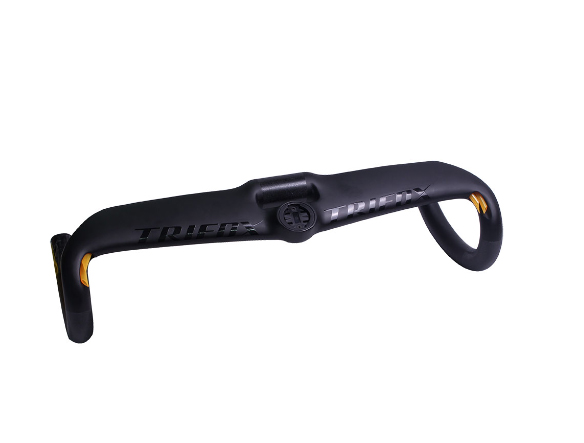
By carefully selecting and properly installing the right drop bar, like the Trifox Aerofoil Section Carbon Drop Handlebar TC20AF, you can significantly enhance your cycling performance and comfort.
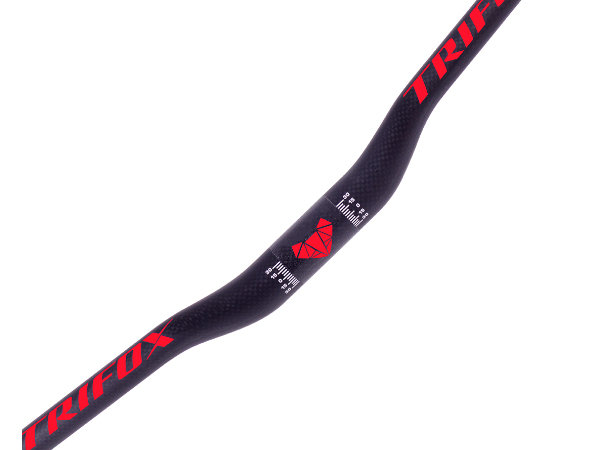
Choosing the best lightweight MTB handlebar for your mountain bike can significantly enhance your comfort, control, and overall riding experience. Here are some key considerations to guide you:
Material: The material of your handlebar plays a vital role in its performance. Carbon fiber handlebars, like the Trifox Carbon Riser Handlebar RHB300, are a top choice due to their superior strength-to-weight ratio. They also excel in absorbing trail vibrations, providing a smoother and more comfortable ride compared to aluminum counterparts.
Width: The width of the handlebar affects control and stability. Wider bars offer better leverage, making them ideal for rough terrains and technical trails. To determine the optimal width, consider your shoulder width and riding style. Cross-country riders might opt for narrower bars for agility, while enduro or downhill riders benefit from wider bars for enhanced control.
Rise and Sweep: The rise refers to the height difference from the center to the ends of the bar. Higher rise handlebars provide an upright riding position, which is beneficial for downhill and technical riding. Lower rise handlebars are preferred for cross-country biking. The sweep, or backward angle of the handlebar, impacts wrist comfort. More sweep can reduce wrist strain during long rides.
Clamp Diameter: Ensure that the handlebar's clamp diameter matches your stem size. Common sizes are 31.8mm and 35mm, with larger diameters offering increased stiffness and strength.
Weight: Since you're focusing on lightweight options, prioritize handlebars that minimize weight without compromising strength and durability. Carbon fiber is often the best material for achieving this balance.
Brand and Reviews: Lastly, consider reputable brands and read user reviews. A product like the Trifox Carbon Riser Handlebar RHB300 comes highly recommended for its quality and performance.
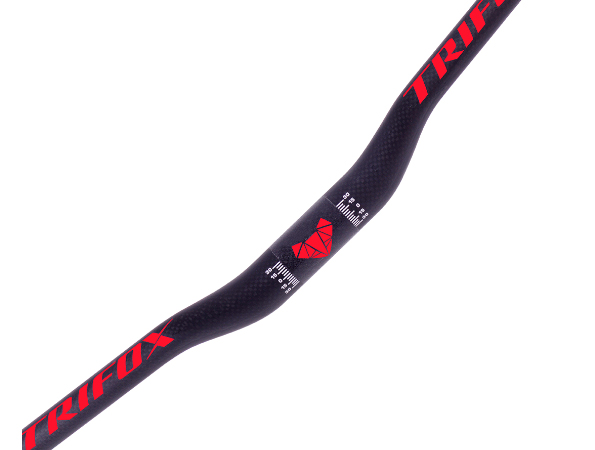
By considering these factors, you can find the perfect lightweight MTB handlebar that enhances your riding style and improves performance. For a reliable option, check out the Trifox Carbon Riser Handlebar RHB300.
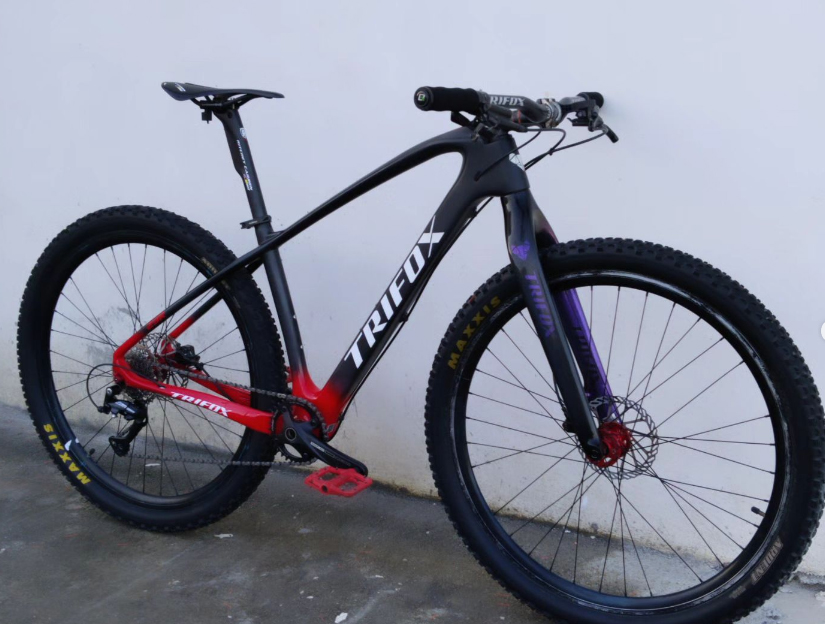
Boost rigid carbon forks offer a blend of strength, lightweight performance, and precise handling, making them ideal for demanding trail rides. Here’s how to maximize the benefits of your boost rigid carbon fork, like the Trifox TMK100.
1. Proper Installation
Start with the correct installation. Ensure the fork is compatible with your frame and wheel setup. The Trifox TMK100, designed for 29er wheels and disc brakes, features a tapered steerer tube for improved stiffness and control. Carefully follow the manufacturer’s instructions to secure it properly and achieve optimal alignment.
2. Wheel Compatibility
Ensure your wheels are boost compatible (110mm front hub spacing). This wider stance enhances stability and provides better handling on technical trails. Pairing your fork with the right wheels is crucial for maximizing performance.
3. Tire Selection
Match your fork with suitable tires. Wider tires (up to 2.5 inches) offer better traction and comfort, complementing the fork's rigid nature. Adjust tire pressure to find a balance between grip and rolling resistance based on trail conditions.
4. Regular Cleaning
Keep your fork clean. Mud and debris can accumulate, affecting performance over time. After rides, gently rinse off dirt and dry thoroughly. Avoid high-pressure water, which can damage the fork’s finish.
5. Periodic Inspection
Regularly inspect your fork for any signs of wear or damage. Check for cracks, especially around the steerer tube and axle mount areas. Early detection of issues allows for prompt repairs, preventing further damage.
6. Maintenance
Though rigid forks require less maintenance than suspension forks, occasional lubrication of the headset and cleaning of the fork legs ensures smooth operation. Follow the manufacturer’s guidelines for any specific maintenance procedures.
7. Ride Adjustment
Adjust your riding style to leverage the fork's rigidity. Approach technical sections with confidence, knowing that your rigid fork offers precise handling and direct feedback from the trail.
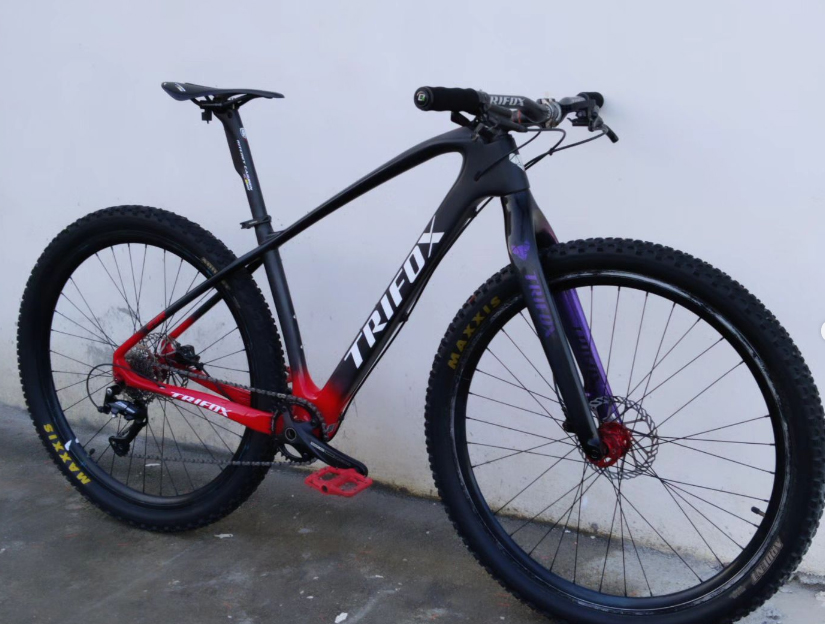
By following these tips, you can get the most out of your boost rigid carbon fork like the Trifox TMK100, ensuring a reliable and exhilarating ride on any terrain.
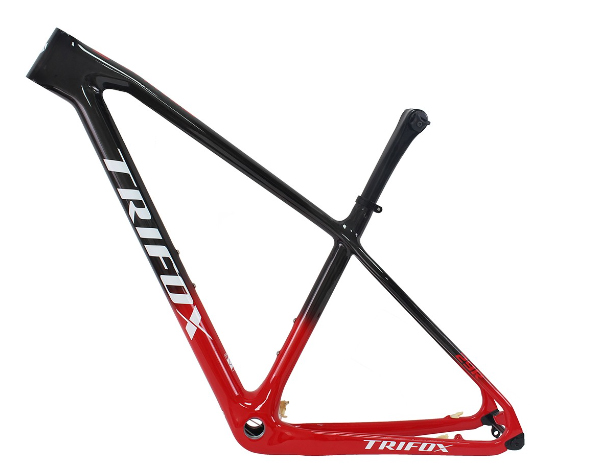
Setting up a full internal cable routing frame can drastically enhance the aesthetics and performance of your bike. By hiding the cables within the frame, you achieve a cleaner look while also reducing drag and preventing cable damage. Here’s a step-by-step guide to setting up a full internal cable routing frame for that sleek, professional appearance.
1. Choose the Right Frame
The first step is selecting a frame designed for internal cable routing. The Trifox SDY21 Carbon MTB Hardtail Frame is an excellent choice. This lightweight, robust frame not only provides the benefits of a carbon build but also features internal routing capabilities that keep your cables protected and out of sight.
2. Gather Necessary Tools and Components
Before you start, ensure you have all the necessary tools and components. You’ll need high-quality cables, housing, a cable cutter, a pick tool, and possibly a magnetic routing kit to help guide the cables through the frame. Having the right tools will make the process smoother and more efficient.
3. Plan Your Cable Paths
Map out the paths each cable will take through your frame. Identify the entry and exit points, and ensure there are no sharp bends that could affect cable performance. The Trifox SDY21 features well-placed entrances and exits to simplify this process, giving you a clear path for routing.
4. Prepare the Frame
Before inserting the cables, make sure the frame is clean and free of any debris. Use a clean cloth to wipe down the inside of the frame tubes if necessary. This prevents any dirt or grime from causing friction or wear on the cables.
5. Insert the Cables
Start with one cable at a time. If you're using a magnetic routing kit, attach the magnet to the end of the cable and guide it through the frame using the magnet on the outside. If not, gently push the cable through, using a pick tool to help navigate through tight spots. Repeat this for each cable, ensuring they follow the planned paths.
6. Secure the Cables
Once the cables are routed through the frame, secure them properly to prevent movement. Use internal cable guides or foam tube sleeves to minimize noise and protect the cables from damage. The Trifox SDY21 frame is designed to accommodate these guides, making it easier to keep everything in place.
7. Connect Components
With the cables routed and secured, connect them to the corresponding components—derailleurs, brakes, and shifters. Test each connection to ensure everything is functioning correctly.
8. Final Adjustments
Make final adjustments to the cable tension and trim any excess housing. Check that all cables move smoothly without any resistance, and make sure the bike operates efficiently.
9. Regular Maintenance
Even with the best setup, periodic maintenance is essential. Inspect the cables regularly for any signs of wear or damage, and replace them as needed to maintain optimal performance.
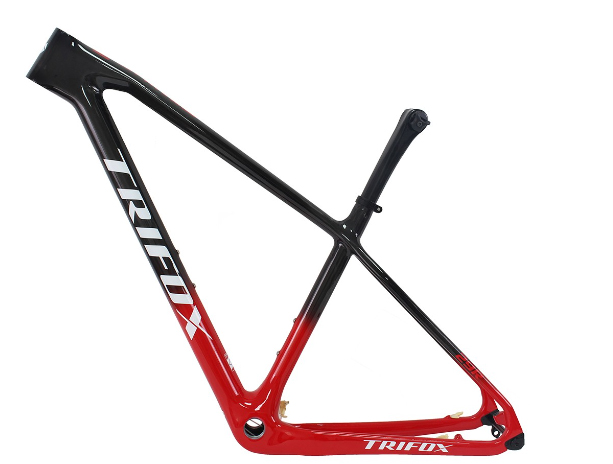
By following these steps, you can achieve a sleek, professional appearance with a full internal cable routing frame. The Trifox SDY21 Carbon MTB Hardtail Frame offers an ideal platform for this setup, combining advanced materials with thoughtful design to enhance both form and function.
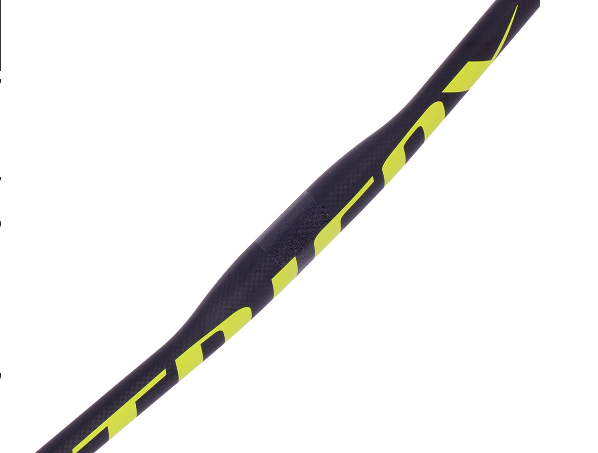
If you're an avid cyclist looking to improve your ride, you might want to consider upgrading to a flat bar. Unlike the traditional drop bars, flat bars offer a range of benefits that can enhance your cycling experience, especially for those who enjoy a more upright and comfortable riding position. Here’s why upgrading to a bicycle flat bar like the Trifox Carbon Flat Bar FHB100 could be the best decision you make.
1. Enhanced Comfort
One of the main reasons cyclists opt for flat bars is the enhanced comfort they provide. Flat bars allow for a more natural hand position, which can reduce strain on your wrists, shoulders, and back. This is particularly beneficial on longer rides or rough terrains where maintaining a comfortable posture is crucial.
2. Improved Handling and Control
Flat bars offer superior handling and control, making them ideal for urban commuting and off-road trails. The wider grip provides better leverage, allowing for more precise steering and easier maneuverability through tight spots or technical sections. The Trifox Carbon Flat Bar FHB100 is designed to optimize control while remaining lightweight.
3. Versatility
A flat bar setup is incredibly versatile and can adapt to various cycling styles. Whether you’re riding in the city, tackling mountain trails, or enjoying casual weekend rides, a flat bar can accommodate your needs. It’s also easier to attach accessories like lights, bells, or GPS devices to a flat bar, adding to its practicality.
4. Durability
Upgrading to a high-quality flat bar, such as the Trifox FHB100, ensures greater durability and longevity. Made from premium carbon fiber, the FHB100 is not only strong but also exceptionally lightweight, reducing the overall weight of your bike without sacrificing performance.
5. Ease of Installation and Maintenance
Switching to a flat bar is relatively straightforward and can usually be done with basic tools. Additionally, flat bars tend to require less maintenance compared to drop bars, as they have fewer components that can wear out or need adjustment.
6. Aesthetic Appeal
For many cyclists, the sleek, minimalist look of a flat bar is more appealing than the more complex appearance of drop bars. The Trifox Carbon Flat Bar FHB100, with its clean lines and refined finish, can give your bike a modern, streamlined look.
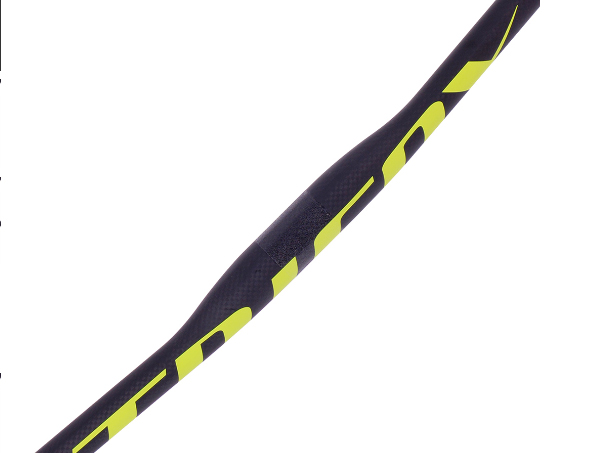
In conclusion, upgrading to a bicycle flat bar like the Trifox Carbon Flat Bar FHB100 offers numerous benefits, from enhanced comfort and improved handling to greater durability and aesthetic appeal. Whether you’re looking to tackle new terrains or simply make your daily commute more enjoyable, a flat bar could be the perfect upgrade to elevate your cycling experience.
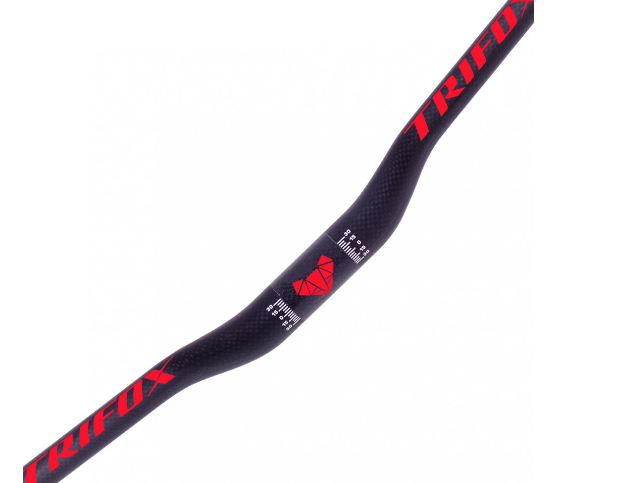
When it comes to cycling, the handlebar is more than just a steering mechanism—it's a critical component that affects control, comfort, and performance. A robust handlebar can elevate your riding experience, making it essential for cyclists of all levels to understand what constitutes a durable and reliable handlebar. Here’s what you need to know about robust handlebars and why they matter, using the Trifox Carbon Riser Handlebar RHB300 as an example.
1. Material Quality
The foundation of a robust handlebar lies in its material. High-quality materials like carbon fiber offer a blend of strength and lightweight properties. The Trifox Carbon Riser Handlebar RHB300 is made from premium carbon fiber, providing excellent durability without adding unnecessary weight. This balance is crucial for maintaining bike agility and rider comfort.
2. Design and Construction
A well-designed handlebar should distribute stress evenly to prevent weak points that could lead to failure. The Trifox RHB300 features a carefully engineered design that enhances structural integrity. Its riser shape also contributes to better control and ergonomics, allowing for a more comfortable and responsive ride.
3. Ergonomics
Comfort is key during long rides, and a robust handlebar should cater to ergonomic needs. The rise and sweep of the handlebar affect hand positioning and overall comfort. The Trifox RHB300 is designed with a thoughtful rise and back-sweep angle, ensuring a natural wrist position and reducing fatigue on extended rides.
4. Vibration Dampening
Cycling over rough terrain can transfer vibrations to your hands and arms, leading to discomfort or even injury. A robust handlebar like the Trifox RHB300 incorporates vibration-dampening properties inherent in carbon fiber. This helps absorb shocks and vibrations, resulting in a smoother and more enjoyable ride.
5. Strength and Durability
To withstand the rigors of various terrains, a handlebar must be strong and durable. The Trifox RHB300 has been subjected to rigorous testing to ensure it meets high standards of strength and longevity. This reliability means you can trust it to perform under demanding conditions, whether you're tackling mountain trails or rough urban streets.
Why Should You Care?
Investing in a robust handlebar is not just about enhancing your bike’s aesthetics. It directly impacts your safety, comfort, and performance. A high-quality handlebar ensures better control and stability, reducing the risk of accidents. Comfort enhancements from ergonomic designs reduce fatigue, allowing you to ride longer and more enjoyably. Moreover, the durability of a robust handlebar means fewer replacements and repairs, saving you money in the long run.
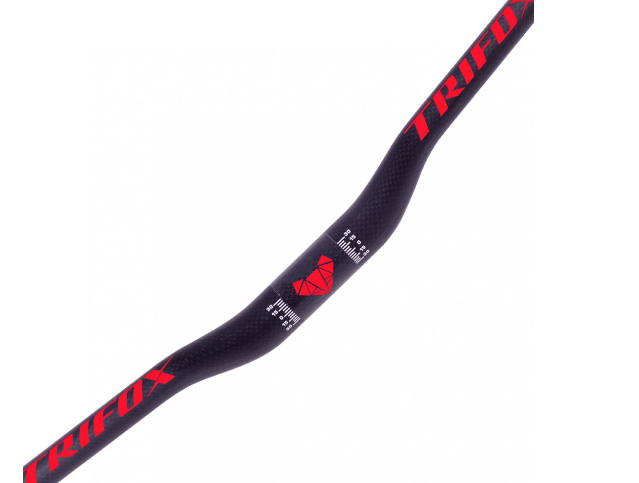
In conclusion, understanding what makes a handlebar robust and investing in a quality product like the Trifox Carbon Riser Handlebar RHB300 can significantly enhance your cycling experience. Prioritize quality, and you'll reap the benefits of a safer, more comfortable, and more enjoyable ride.


























































